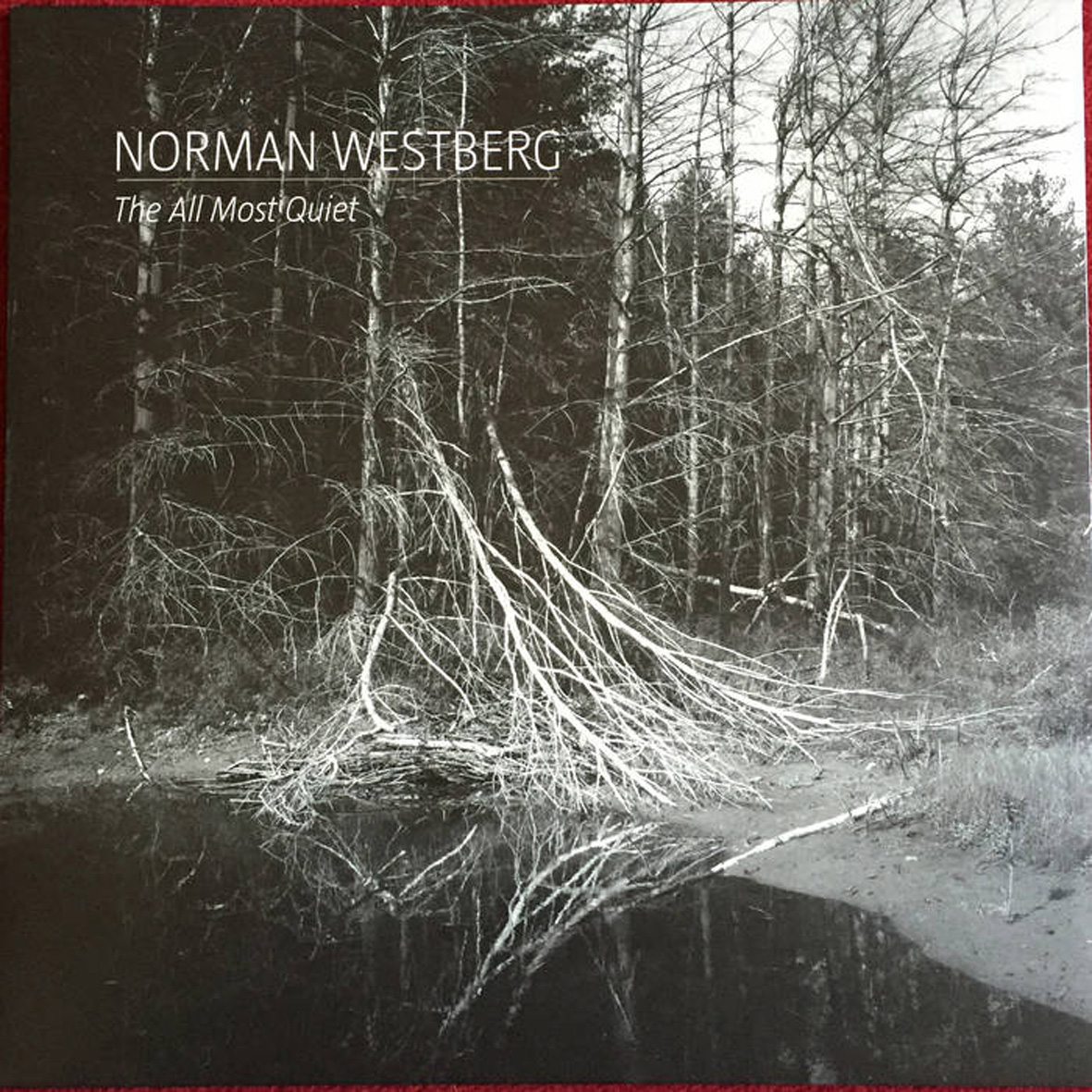
Swans' guitarist Norman Westberg’s second solo release for the increasingly essential Hallow Ground label continues the temporally disorienting 2016 hot streak begun with MRI (which was recorded at least four years ago).  Though there is a fairly wide gulf separating the two recordings time-wise, they both stand apart from some of Westberg’s other solo work by effectively balancing his warm and dreamlike guitar-drone tendencies with the added heft and menace of well-placed dissonance.  In short, this is yet another wonderful album.
Like most recent Westberg releases, The All Most Quiet consists of two long-form pieces of similar lengths.  The first side of the record is devoted to the title piece, which opens with a stark and ominous thrum.  As the piece progresses, however, ripples of obsessively repeating loops begin to percolate though the foundational drone.  The most immediately obvious impact is textural and dynamic, as the loops take over the foreground and weave an elegantly blurred and gently pulsing tapestry.  The piece gets quite a bit more compelling, however, once Westberg begins to play with harmony, as unexpected dissonances slowly blossom and dissipate.  Listened to casually, "The All Most Quiet" definitely works as a very likeable foray into shimmering ambient drone with some passing dark clouds, but its true depth does not reveal itself without some serious attention to detail: Westberg's unique genius as a solo artist is very much an understated and deeply nuanced phenomenon.  While he works within fairly familiar stylistic terrain in a larger sense, much of Westberg’s most impressive artistry tends to lie either in the periphery or just under the surface.  In this case, my favorite moments are almost exclusively small-scale touches like the way loops slowly fall out of phase with one another or the way he uses delay to leave hazy afterimages that mass together.
The second side’s "Sound 2" is considerably less subtle with its dissonance, opening with a very insistent and somewhat shrill alarm-like loop that Westberg gradually transforms with the addition of vibrato and a churning undercurrent.  That "alarm" motif turns out to be the piece’s primary foundation throughout, but Westberg takes it in a number of unexpected and ambitious directions, as it sounds completely disembodied from its surroundings at one point, then is later enveloped by a gorgeously rich and sinister web of ugly, pulsing harmonies.  The overall mood is surprisingly fluid as well, as "Sound 2" dips its toes into quasi-industrial territory, menacingly gnarled harmonies, and hallucinatory otherworldliness before resolving into a complexly layered and lushly oceanic interlude of rippling piano-like tones.  Naturally, there is a lot going on at the microcosmic level, but "Sound 2" offers considerably more overt appeal than its more static predecessor, as its many transformations are all effective and intriguing.  Also, it gets remarkably heavy at times.  That said, however, the best parts still tend to lie in the details, particularly in how Westberg makes notes cohere into a sickly swarm of horror, then allows the dissonance to almost invisibly dissipate until there is no trace of darkness to be found at all.  I was also impressed at how "Sound 2" feels so epic, yet is so beautifully condensed.  In lesser hands, it would take an entire album to get from the opening to the closing of this piece, but Westberg does not waste a single second or allow any single movement to overstay its welcome.  That is an impressive achievement on its own, but the fact that he makes it all feel so natural and unhurried makes it doubly so.
Amusingly, I was taken aback by how wonderful MRI was when it when it was reissued by Room40 earlier this year and I am now taken aback yet again by the greatness of The All Most Quiet.  While both albums scale very similar heights, this latest release is the more uniformly strong of the two.  There is not a misstep or lull anywhere to be found here.  Also, at the risk of sounding like a broken record (or a loop-based solo guitar performance), The All Most Quiet reaffirms everything that I have already observed about Westberg's relation to the modern classical/minimalist tradition.  Granted, Westberg is just a guy alone in his room with a guitar and a bunch of pedals and I suspect a lot of what he does is improvised and intuitive, which is certainly very different than composing for an orchestra.  The differing paths do not make the end result any less impressive though.  In a broader sense, Westberg’s grasp of harmony and dynamics places his work at a level far beyond that of just about anyone else working in the drone and guitar improv spheres: Norman Westberg is basically the Morton Feldman of solo guitarists (albeit considerably more accessible than that intended compliment would imply).
 
Read More

